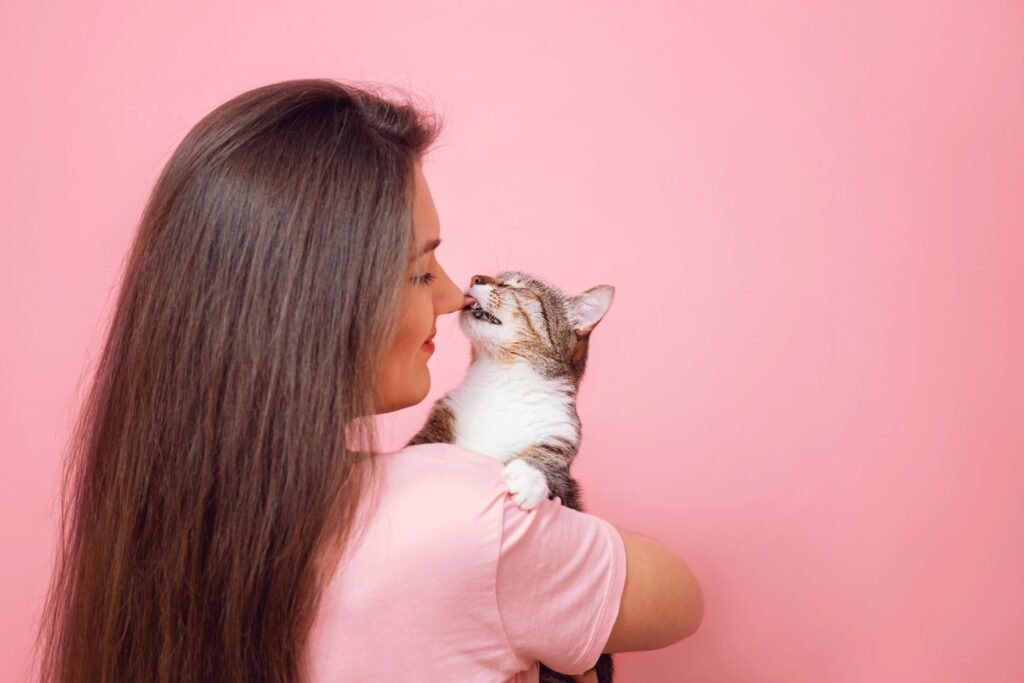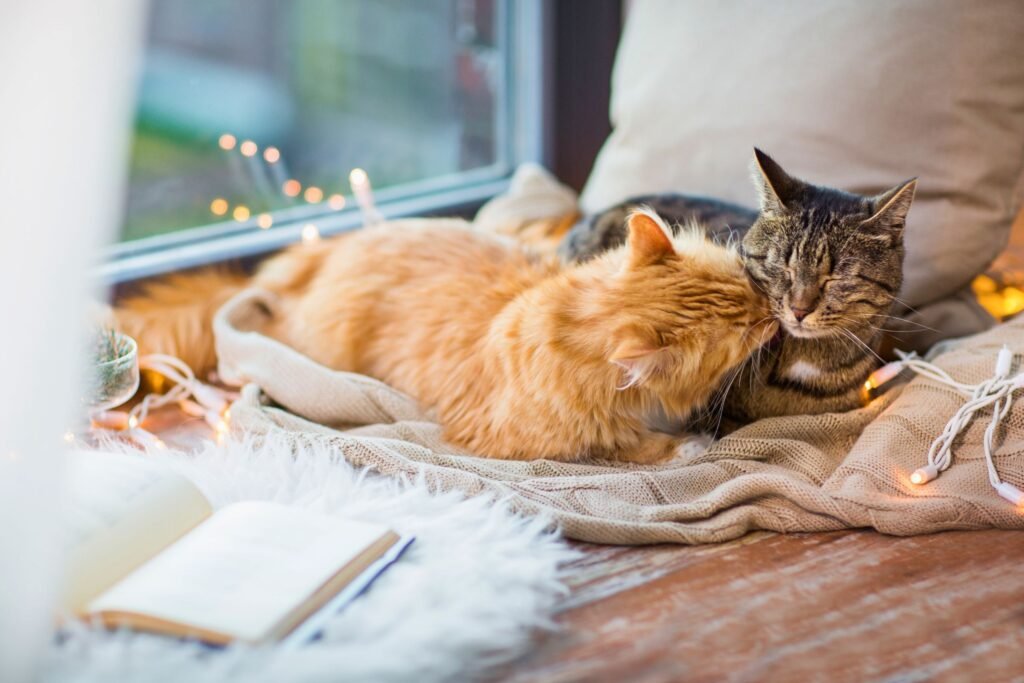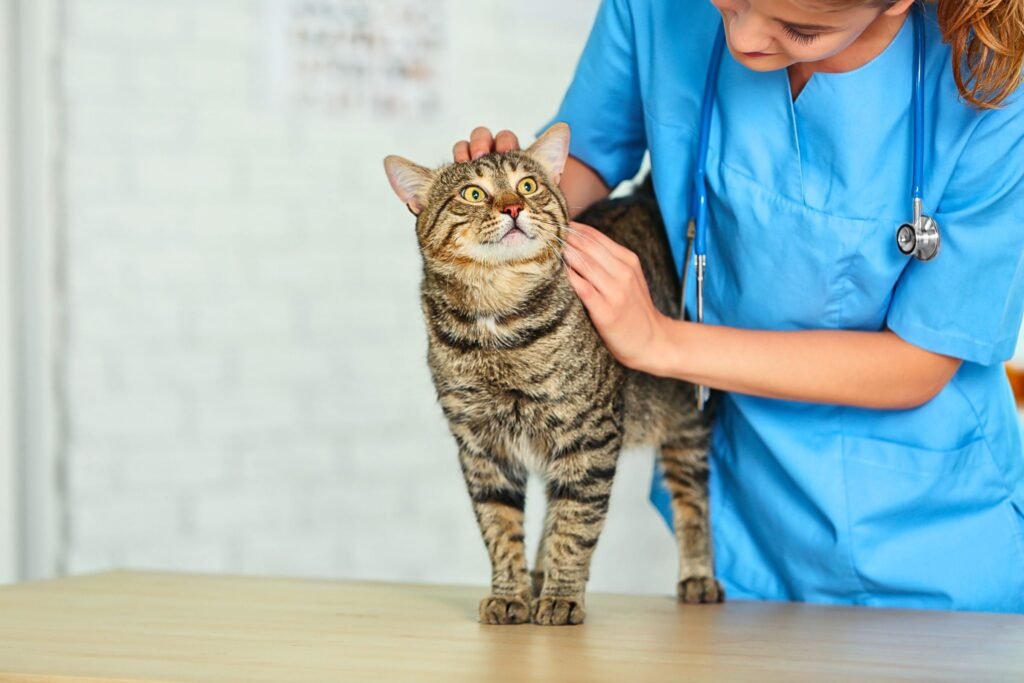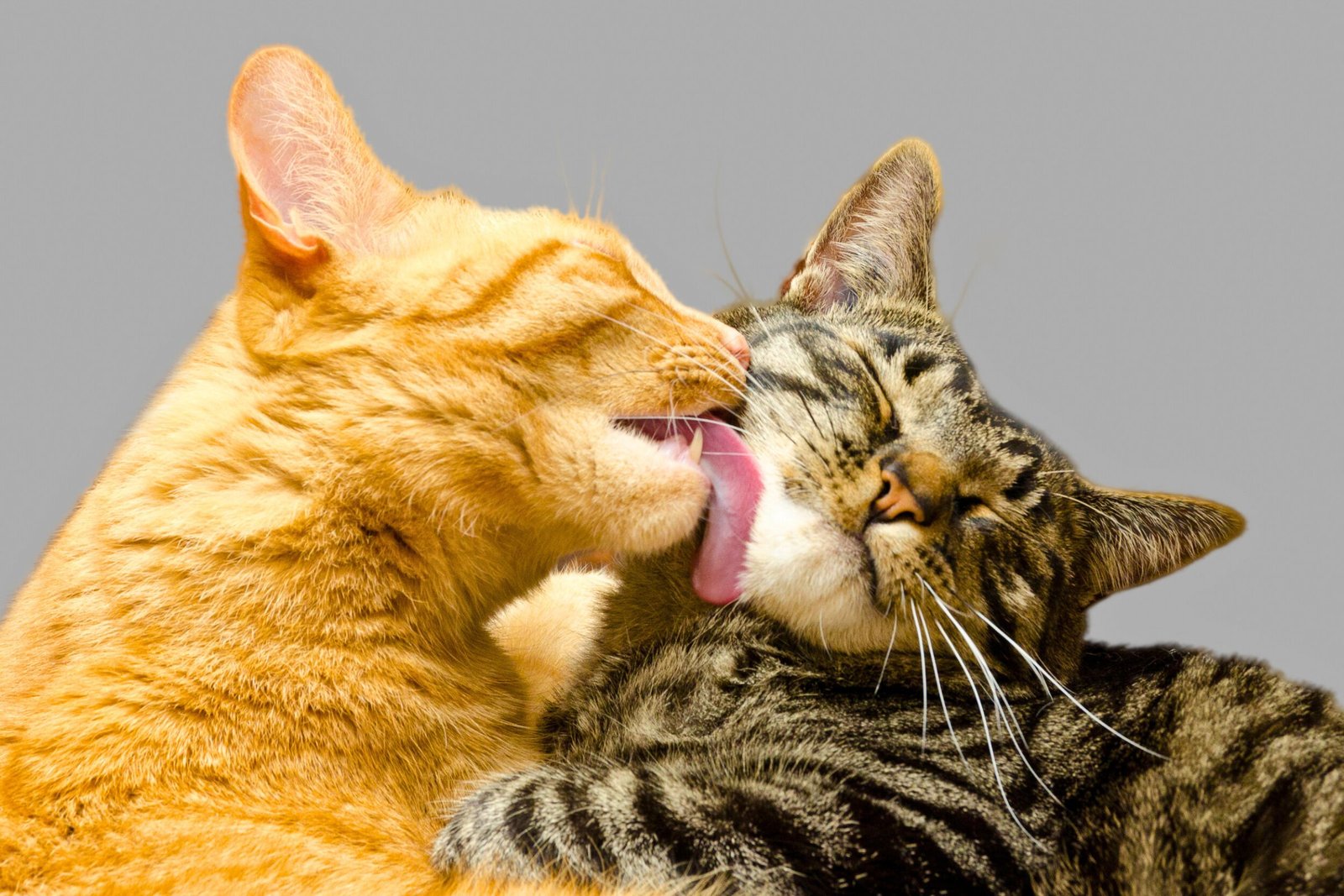In the enchanting tapestry of feline companionship, the seemingly ordinary act of cat licking reveals itself as a gateway to the intricate emotions shared among our cherished pets. Whether among cats of different sexes, the nuanced behaviors of grooming transcend the surface of hygiene, unveiling a rich language of trust, affection, and emotional connection.
As we delve into the enigmatic world of cat feelings, we explore the profound significance of grooming rituals. Cats, irrespective of their genders, engage in reciprocal licking not merely as a functional grooming routine, but as a poignant expression of comfort and warmth. This shared language of emotion provides a unique window into the complex social dynamics and affections that define the relationships between our feline friends. Join us on this journey to unravel the mysteries of cat feelings, where every lick becomes a brushstroke painting the canvas of their emotional bonds.
The Evolutionary Roots of Cat Licking

Cat licking has deep-seated roots in the evolutionary history of felines, stemming from the wild ancestors of our domestic cats. Observing the behavior of wild cats, both solitary and social, provides valuable insights into the origins and significance of grooming within the feline community.
Social Structure in Wild Cats
In the wild, cats are not always solitary hunters; some species exhibit social behaviors and live in groups, known as colonies or prides. Even among more solitary species, occasional social interactions occur, especially during mating seasons or when raising offspring. Grooming, in this context, serves as a fundamental aspect of their social structure.
Reinforcing Social Bonds
Wild cats engage in grooming not only for hygiene purposes but also as a powerful tool for reinforcing social bonds within their group. The act of licking helps establish and maintain a sense of unity and cooperation among individuals, contributing to the overall success of the group. These social bonds are crucial for activities like hunting, protecting territory, and raising young.
Scent Communication
One intriguing aspect of cat licking in the wild is its role in scent communication. Cats have scent glands located on various parts of their bodies, including their tongues. During grooming sessions, they transfer their unique scent to one another, creating a communal scent profile for the group. This communal scent becomes a signature that identifies members of the same social unit and helps in recognizing intruders or unfamiliar individuals.
Domestic Cats and Inherited Instincts
As domestic cats evolved from their wild counterparts, many of these instinctual behaviors were retained. Even though the environment and social dynamics have changed, the fundamental reasons for grooming, such as reinforcing social bonds and scent communication, remain embedded in their instincts.
Significance for Domestic Cats
Understanding the evolutionary roots of cat licking provides a lens through which we can interpret the behavior of our domestic feline companions. In the home environment, cats may not need to cooperate for hunting or defending territory, but the deep-seated need for social bonds persists. Grooming, therefore, becomes a way for domestic cats to express and maintain these bonds, creating a sense of security and community within the household.
In essence, the evolutionary perspective on cat licking reveals that this behavior is not merely a superficial act of hygiene but a profound expression of the social nature ingrained in felines throughout their evolutionary journey. By recognizing and respecting these instincts, cat owners can foster a more enriching and harmonious relationship with their pets.
Social Hierarchy and Cat Licking

Cats, whether in a domestic setting or outdoors, have a complex social structure that involves the establishment of hierarchies. This social order plays a pivotal role in shaping their interactions and behaviors, with cat licking being a prominent element in the dynamics of feline social hierarchy.
The Importance of Social Hierarchy
In a group of cats, be it a multi-cat household or a community of outdoor felines, a social hierarchy emerges to maintain order and reduce conflict. Establishing a clear pecking order helps cats coexist peacefully, allocate resources, and define roles within the group. This hierarchy is not fixed and can evolve based on various factors, including individual personalities, age, and health.
Cat Licking as a Display of Dominance
Cat licking is often intertwined with the expression of dominance within the feline social structure. Dominant cats may initiate grooming sessions with subordinate individuals as a display of their higher rank. This act serves as a way for the dominant cat to assert control and reinforce their position within the social hierarchy. The grooming ritual becomes a form of social currency, affirming the dominant cat’s authority.
Reciprocal Grooming as a Sign of Respect
On the flip side, subordinate cats may reciprocate by allowing themselves to be groomed or by initiating grooming sessions with higher-ranking individuals. This behavior is a sign of respect and acknowledgment of the dominant cat’s authority. Subordinate cats recognize the importance of maintaining harmony within the group, and offering themselves for grooming is a submissive gesture that fosters social cohesion.
Establishing and Maintaining Bonds
Beyond the hierarchical implications, cat licking also plays a crucial role in building and maintaining bonds within the group. Grooming sessions between cats, regardless of their rank, contribute to a sense of community and shared identity. These interactions help mitigate tension and promote a cooperative environment, enhancing the overall well-being of the feline group.
Observing Hierarchical Interactions
For cat owners, observing the dynamics of cat licking within a multi-cat household provides valuable insights into the social hierarchy at play. Recognizing which cats take on dominant roles and understanding the reciprocal grooming behaviors can help owners facilitate a harmonious living environment by respecting and addressing the social needs of their feline companions.
In conclusion, the connection between social hierarchy and cat licking underscores the intricate nature of feline relationships. By acknowledging and respecting the roles that dominance and submission play in these interactions, cat owners can create a supportive environment that aligns with their pets’ social instincts.
Cat Licking and Stress

While cat licking is often associated with expressions of affection and bonding, it is crucial for cat owners to be attuned to instances where this behavior takes a different turn. Excessive licking can be a red flag indicating that a cat may be experiencing stress or anxiety. Understanding the connection between cat licking and stress is essential for fostering a healthy and supportive environment for our feline companions.
Grooming as a Coping Mechanism
Cats, in response to stressors, may intensify their grooming behaviors as a coping mechanism. Excessive licking serves as a self-soothing technique for cats, helping them alleviate anxiety and regain a sense of control. While occasional grooming is normal, an increase in frequency or duration may signal an underlying issue.
Environmental Changes and Stress
One common trigger for stress-related grooming is significant changes in the cat’s environment. This could include moving to a new home, rearranging furniture, being in an unfamiliar environment with unfamiliar people or introducing new pets. Cats are creatures of habit, and disruptions to their familiar surroundings can induce stress. Excessive licking may manifest as a response to the uncertainty or perceived threat posed by these changes.
New Additions to the Family
The introduction of new family members, whether human or animal, can be a source of stress for cats. The presence of a new pet or a baby in the household may lead to increased grooming behaviors. Cats may use grooming as a way to manage the stress associated with adapting to a different social dynamic or sharing their territory.
Health Issues and Stress
In some cases, stress-induced grooming may be a symptom of underlying health issues. Pain or discomfort, such as skin irritations, dental problems, or allergies, can lead cats to excessively groom specific areas in an attempt to alleviate the discomfort. It’s crucial for cat owners to consult with a veterinarian if they observe changes in grooming habits, as it could be indicative of an underlying medical condition.
Recognizing Signs of Stress
Cat owners should be vigilant in recognizing signs of stress in their pets. Excessive grooming can lead to hair loss, skin irritations, and even the formation of hairballs if the cat ingests a significant amount of fur. Other signs of stress may include changes in appetite, withdrawal, or aggressive behavior. Identifying these signs early on enables proactive measures to address the root causes of stress.
Creating a Comfortable Environment
To mitigate stress-related grooming behaviors, cat owners can take steps to create a comfortable and secure environment. Providing a consistent routine, offering hiding spots, and maintaining a stable living environment can help alleviate stress. Additionally, engaging in interactive play and providing mental stimulation can redirect a cat’s focus and reduce anxiety.
In conclusion, while cat licking is a natural and instinctual behavior, recognizing when it transforms into a stress-related coping mechanism is crucial for the well-being of our feline companions. By understanding the potential triggers and taking proactive measures to address stressors, cat owners can ensure a happy and healthy life for their pets.
Grooming Rituals in Bonded Pairs

The phenomenon of grooming takes on a special significance when it comes to bonded pairs of cats. Whether these pairs consist of siblings, mates, or simply close companions, the elaborate grooming rituals they engage in go beyond mere hygiene. These sessions play a pivotal role in strengthening the emotional connection between the cats and reinforcing the social fabric within the pair.
Strengthening Emotional Bonds
Grooming between bonded pairs is a deeply intimate and reciprocal activity. Cats in these pairs take turns grooming each other, creating a shared experience that goes beyond the functional aspects of cleanliness. The physical contact and close proximity during grooming contribute to the development of a profound emotional bond between the cats.
Establishing Trust and Affection
Grooming rituals within bonded pairs serve as a powerful expression of trust and affection. When a cat allows another to groom it, it demonstrates a level of vulnerability and reliance on the bond they share. This vulnerability is reciprocated when the grooming roles are reversed. Through this exchange, a mutual understanding and trust are reinforced, creating a sense of security within the pair.
Reinforcing Social Structure
In bonded pairs, grooming also plays a role in reinforcing the social structure within the relationship. While cats are known for their independent nature, those in bonded pairs establish a unique dynamic. The grooming ritual establishes roles within the pair, contributing to a harmonious coexistence. This shared activity helps define the boundaries and expectations within the partnership.
Observing Subtle Communication Cues
The grooming sessions between bonded pairs provide a fascinating window into the subtle communication cues exchanged between the cats. From the gentle purring to the rhythmic licking, these rituals convey a language of their own. Observant cat owners can gain valuable insights into the emotional state of their pets by paying attention to the nuances of these interactions.
Indicators of a Strong Bond
The frequency and enthusiasm with which bonded pairs engage in grooming rituals can serve as indicators of the strength of their relationship. Cats that share a strong bond may engage in grooming sessions more frequently and with visible contentment. These interactions contribute to a positive and enriching environment for both cats, fostering a sense of companionship and well-being.
Nurturing Bonded Pairs in a Home Setting
For cat owners fortunate enough to witness the grooming rituals of bonded pairs, providing an environment that nurtures these relationships is essential. Offering comfortable spaces for shared rest, providing interactive toys, and maintaining a calm and stable living environment contribute to the overall well-being of bonded pairs.
The grooming rituals within bonded pairs of cats showcase the depth of emotional connections that felines can form. These intimate sessions go beyond the surface of hygiene, offering a glimpse into the intricate social dynamics and the unique language of affection that define these special relationships.
Cat Licking and Communication

Cats are highly communicative creatures, utilizing a diverse array of signals to convey messages within their social groups. Among these nuanced methods, licking plays a significant role as a form of communication. The transfer of scents during grooming sessions serves as a sophisticated means through which cats communicate with each other, establishing a communal scent that fosters a shared identity within the group.
Scent Communication in Cats
The sense of smell is paramount in the feline world, and cats possess scent glands located on various parts of their bodies, including their faces, paws, and tongues. When cats engage in licking, they are not only tending to their grooming needs but actively participating in a form of scent communication. The act of licking transfers the individual scents of each cat, creating a collective aroma that signifies group membership.
Communal Scent and Group Identity
The communal scent developed during grooming rituals helps establish a shared identity within the cat group, whether it’s a multi-cat household, a feral colony, or a group of outdoor cats. This shared scent acts as a unifying factor, creating a recognizable olfactory signature that identifies members of the same social unit. This communal scent is crucial in reducing tension among cats and facilitating smoother interactions.
Reinforcing Social Bonds
Beyond the functional aspects of scent communication, the act of licking also serves to reinforce social bonds among cats. When one cat licks another, it is not merely about cleanliness but an intentional act of strengthening the emotional connection between individuals. The shared scent becomes a constant reminder of their social ties, contributing to a harmonious and cooperative group dynamic.
Recognition and Acceptance
The exchange of scents through licking also plays a role in the recognition and acceptance of new members within a group. When a new cat is introduced, grooming sessions become a crucial means for the existing members to familiarize themselves with the newcomer’s scent. Over time, as the communal scent integrates, it signifies acceptance and inclusion within the group.
Facilitating Cooperative Behavior
The communal scent established through grooming rituals has practical implications in facilitating cooperative behavior within the cat group. Cats sharing a common scent are more likely to collaborate in activities such as hunting, territorial defense, and caregiving. This cooperative behavior is underpinned by the sense of unity and mutual recognition fostered by the shared scent.
Observing Cat Communication
For cat owners, observing the communication through licking provides a unique window into the social dynamics of their feline companions. Recognizing the significance of scent communication allows owners to appreciate the depth of the connections between their cats and fosters a greater understanding of the subtle language of feline interactions.
Cat licking goes beyond a simple grooming routine; it serves as a powerful form of communication among cats. The transfer of scents during these grooming sessions establishes a communal identity, reinforces social bonds, and facilitates cooperative behavior within the intricate social fabric of feline communities.
Addressing Concerns About Excessive Licking

While cat owners appreciate the occasional grooming habits of their feline companions, it’s crucial to remain vigilant about excessive licking, as it could signal underlying health issues or behavioral problems. Recognizing and addressing these concerns promptly ensures the well-being of the cat. Consulting with a veterinarian is a critical step in ruling out medical conditions, and if necessary, seeking the expertise of a professional animal behaviorist can provide insights into and solutions for behavioral issues.
Potential Causes of Excessive Licking
Medical Issues: Persistent, excessive licking can be a symptom of various medical issues, including skin allergies, infections, dental problems, or pain. Cats may resort to grooming as a way to alleviate discomfort. A thorough veterinary examination can help identify and address any underlying health concerns.
Stress or Anxiety: Cats may engage in excessive grooming as a coping mechanism in response to stress or anxiety. Changes in the environment, new additions to the family, or disruptions to their routine can contribute to heightened stress levels. Identifying and addressing the source of stress is crucial in resolving behavioral issues.
Compulsive Behavior: Some cats develop compulsive grooming habits, similar to obsessive-compulsive disorders in humans. This may manifest as repetitive, ritualistic grooming that goes beyond normal self-maintenance. Professional intervention, often involving a certified animal behaviorist, is necessary to address such compulsive behaviors.
Consulting with a Veterinarian
Diagnostic Evaluation: If a cat exhibits signs of excessive licking, a veterinarian can conduct a thorough diagnostic evaluation. This may include physical examinations, blood tests, skin tests, or imaging studies to identify any underlying medical conditions.
Treatment of Medical Issues: If a medical issue is identified, the veterinarian will prescribe an appropriate treatment plan. This may involve medications, dietary changes, or other interventions to address the specific health concern.
Involving a Professional Animal Behaviorist
Behavioral Assessment: A certified animal behaviorist can conduct a detailed behavioral assessment to understand the root causes of excessive licking. They will consider environmental factors, social dynamics, and any potential stressors affecting the cat.
Behavior Modification Techniques: Based on the assessment, the behaviorist may recommend specific behavior modification techniques to address the underlying causes of excessive grooming. This could involve environmental enrichment, changes in routine, or the introduction of calming measures.
Owner Education: Animal behaviorists often educate cat owners on understanding feline behavior, interpreting signs of stress, and implementing strategies to promote a healthier and more balanced environment for the cat.
Preventive Measures
Regular Veterinary Check-ups: Scheduling regular veterinary check-ups helps monitor a cat’s overall health and detect potential issues before they escalate.
Environmental Enrichment: Providing a stimulating environment with toys, scratching posts, and climbing structures can help alleviate boredom and reduce stress.
Consistent Routine: Maintaining a consistent daily routine for feeding, play, and rest can contribute to a sense of security for the cat.
Cat owners play a crucial role in ensuring the well-being of their pets. Addressing concerns about excessive licking requires a collaborative effort between the owner, the veterinarian, and, if necessary, a professional animal behaviorist. By taking a proactive approach and considering both medical and behavioral aspects, cat owners can contribute to their feline companions’ health and happiness.
Understanding Cat Affection: The Emotional Landscape of Feline Companionship

Cats, known for their enigmatic nature, exhibit a range of behaviors that reveal the depth of their emotional connections with each other. When it comes to licking, irrespective of their sexes, cats engage in this behavior as a powerful expression of affection and emotion towards their feline companions.
Affectionate Licking Across Genders
Cats of different sexes commonly engage in licking as a way to demonstrate their affection. This behavior is not limited to familial relationships but extends to various social dynamics, including friendships and even in multi-cat households where cats form close bonds. The act of licking becomes a shared language of emotion, conveying a sense of trust, comfort, and warmth between feline individuals.
Expressions of Comfort and Security
When cats of different sexes lick each other, it is a tangible expression of the comfort and security they find in one another’s presence. The rhythmic motion of grooming creates a soothing experience, and the shared scent produced during these sessions contributes to a sense of familiarity and belonging. This mutual grooming reinforces the emotional bonds that cats form, promoting a harmonious coexistence.
Beyond Basic Hygiene
While grooming is essential for maintaining cleanliness, when cats extend this behavior to each other, it transcends the functional aspects of hygiene. It becomes an emotional exchange that goes to the core of their social nature. Cats display vulnerability and trust during these grooming sessions, showcasing the depth of their feelings towards their feline companions.
Observing Feelings Through Behavior
For cat owners, observing these affectionate interactions provides a window into the emotional landscape of their pets. Cats may engage in reciprocal grooming, taking turns to express their affection. Purring, gentle head-butting, and slow blinks often accompany these grooming sessions, further underscoring the positive emotions at play.
Creating a Positive Environment
To foster and support these feelings of affection between cats of different sexes, creating a positive environment is crucial. Providing spaces for shared rest, ensuring ample resources like food and litter boxes, and minimizing stressors in the environment contribute to a conducive atmosphere for healthy social interactions.
In conclusion, the act of licking between cats of different sexes serves as a poignant demonstration of the complex emotional lives these animals lead. It is a language of affection that transcends the boundaries of gender, underlining the richness of feline companionship and the intricate ways in which cats express their feelings towards each other.
Conclusion

In the enchanting world of feline companionship, the act of licking among cats, irrespective of their sexes, emerges as a profound expression of emotion and affection. The added section exploring cat feelings towards each other through grooming rituals further underscores the intricate nature of these bonds.
As cats engage in reciprocal grooming, they unveil a language of trust, comfort, and warmth. Beyond the surface of hygiene, licking becomes a shared experience, weaving a tapestry of emotions that define the relationships between our feline friends. The observation of these affectionate behaviors provides cat owners with a tangible connection to the emotional lives of their pets, fostering a deeper appreciation for the complexities of feline companionship.
To nurture and support these feelings of affection, cat owners play a pivotal role in creating a positive environment. Through thoughtful consideration of their cats’ social needs, the provision of secure and comfortable spaces, and the minimization of stressors, owners contribute to the flourishing of these emotional connections.
In essence, the licking behavior among cats transcends the boundaries of gender, offering a glimpse into the profound emotional landscape that defines their relationships. As we continue to unravel the mysteries of feline behavior, we find ourselves enriched by the depth of feelings shared between our cherished feline companions.








